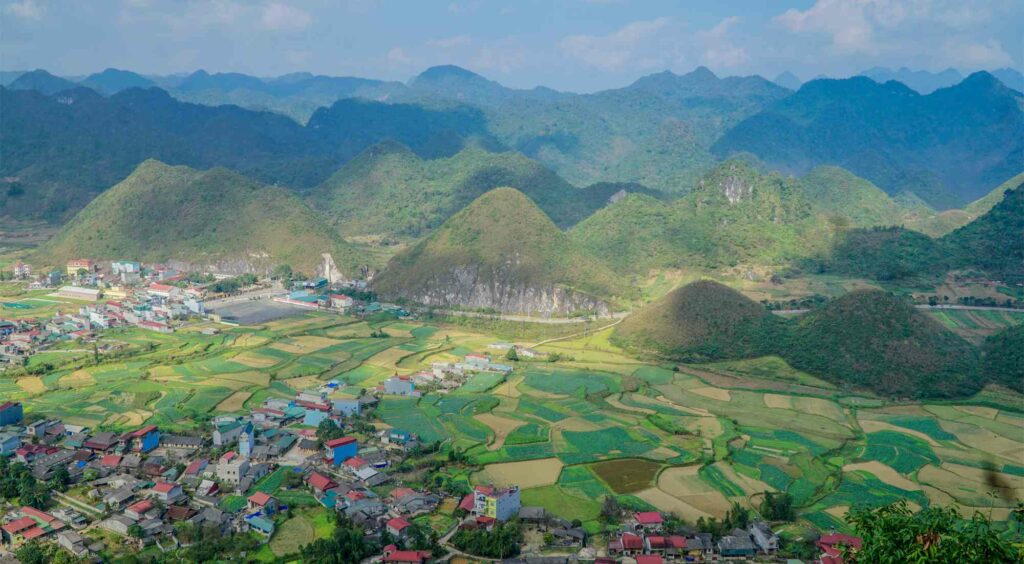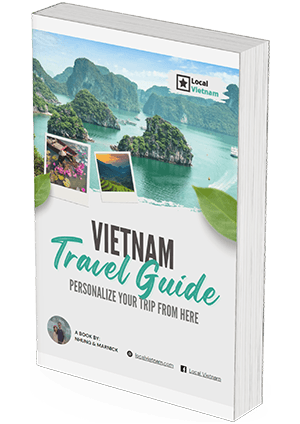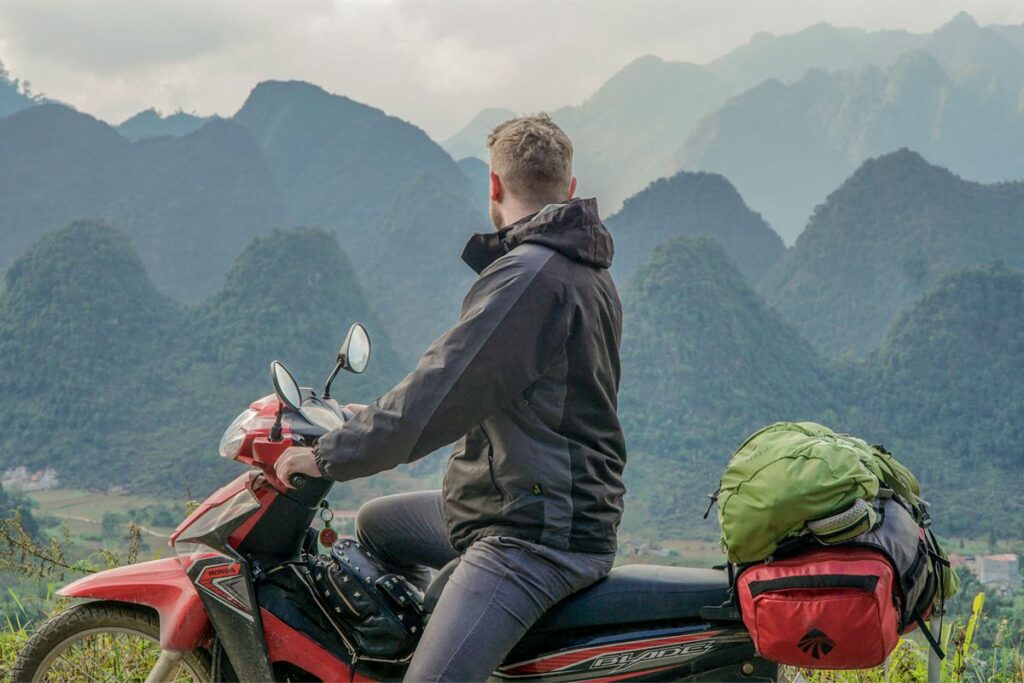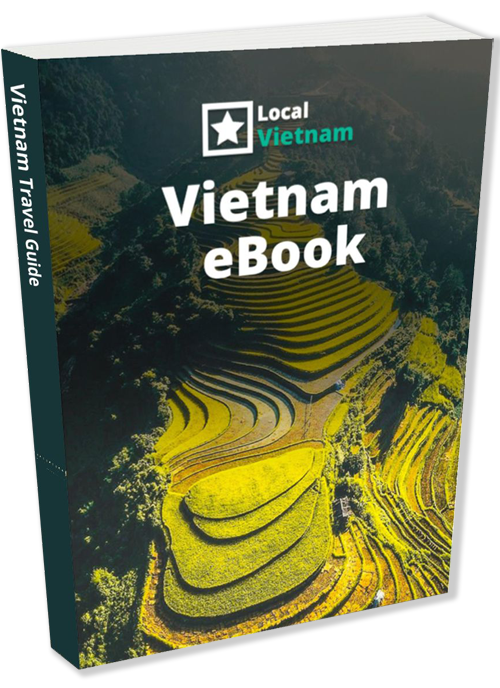About Quan Ba
The first gateway to the Ha Giang Loop
Quan Ba is one of the most scenic districts of Ha Giang, located just over 40 km from Ha Giang City. It serves as the first major gateway into the Dong Van Karst Plateau Geopark and plays a significant role in the Ha Giang Loop, with its winding roads cutting through limestone mountains, lush valleys, and ethnic minority villages.
The district’s main town, Tam Son, is a small but lively stop for travelers on the Ha Giang Loop, offering markets, restaurants, and accommodations. The region is famous for its stunning valleys, terraced fields, and winding rivers, creating postcard-worthy landscapes. One of its most famous spots is Quan Ba Heaven Gate, which offers a breathtaking panoramic view over the valleys and mountains.
Ethnic minority culture and traditional life
Quan Ba is home to several ethnic minority groups, including the H’Mong, Dao, and Tay people, who have lived in these remote highlands for generations. These communities practice traditional farming, textile weaving, and wood carving, preserving a way of life deeply connected to nature. Many villages in Quan Ba remain untouched by mass tourism, offering a glimpse into authentic rural life. Visitors can see stilt houses, local markets, and traditional handicrafts, and even stay in ethnic homestays for an immersive experience.
A place worth exploring
While many travelers pass through Quan Ba quickly on the Ha Giang Loop, those who take the time to explore will discover hidden waterfalls, off-the-beaten-path villages, and breathtaking mountain passes that make this region truly special.
Must-visit places in Quan Ba
Quan Ba is a vast district, covering a diverse landscape of valleys, rivers, mountains, and ethnic villages. As you journey through this stunning region on the Ha Giang Loop, you’ll come across breathtaking viewpoints, hidden caves, traditional weaving villages, and cultural landmarks. Below are 10 must-visit places in Quan Ba that showcase the beauty and culture of the area.
1. Quan Ba Heaven Gate
Quan Ba Heaven Gate, also known as Quan Ba Pass, is the first major viewpoint along the Ha Giang Loop, located 40 km from Ha Giang City. It marks the transition from the lower hills of Ha Giang into the towering karst mountains of the Dong Van Karst Plateau.

At the summit of the pass, there’s a small coffee shop, making it a great place to pause and enjoy a drink while admiring the scenery. The road leading up the pass offers some of the best panoramic views in the region.
Travel Tip: If you’re visiting in the colder months (December – February), this area can be misty in the early morning, so it’s best to visit in the late morning or early afternoon for clearer views.
2. Quan Ba Twin Mountains (Fairy Breast Mountains)
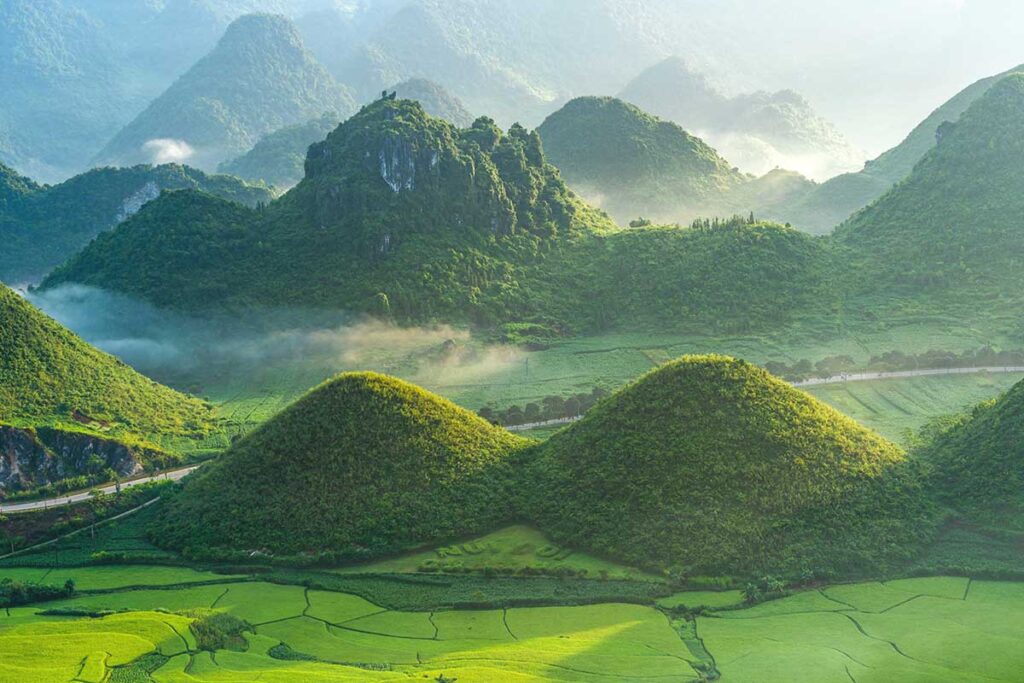
The Twin Mountains of Quan Ba, also called the Fairy Breast Mountains, are two identical hills that have become an icon of Ha Giang. According to Hmong legend, a fairy left behind her breasts to nourish her child, and they eventually turned into these two peaks.
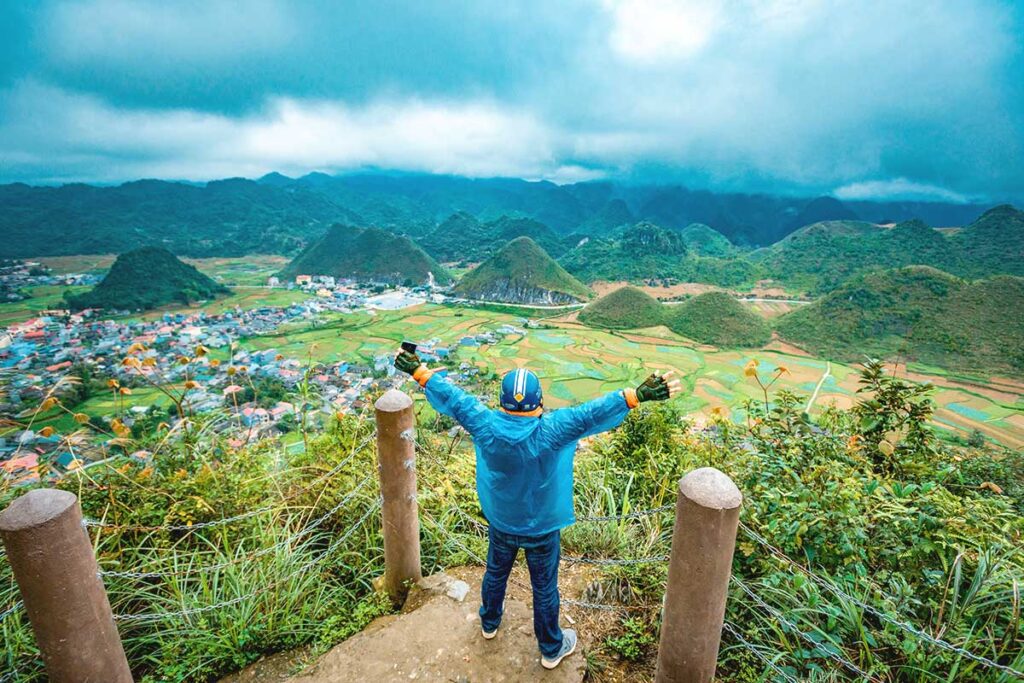
The best views of the Twin Mountains are from the designated viewpoint halfway down Quan Ba Pass, where a parking lot and stairs lead up to a scenic platform. Additionally, as you continue driving toward Tam Son town, there are several spots along the main road where you can pull over for a great view.
3. Lung Tam Weaving Village
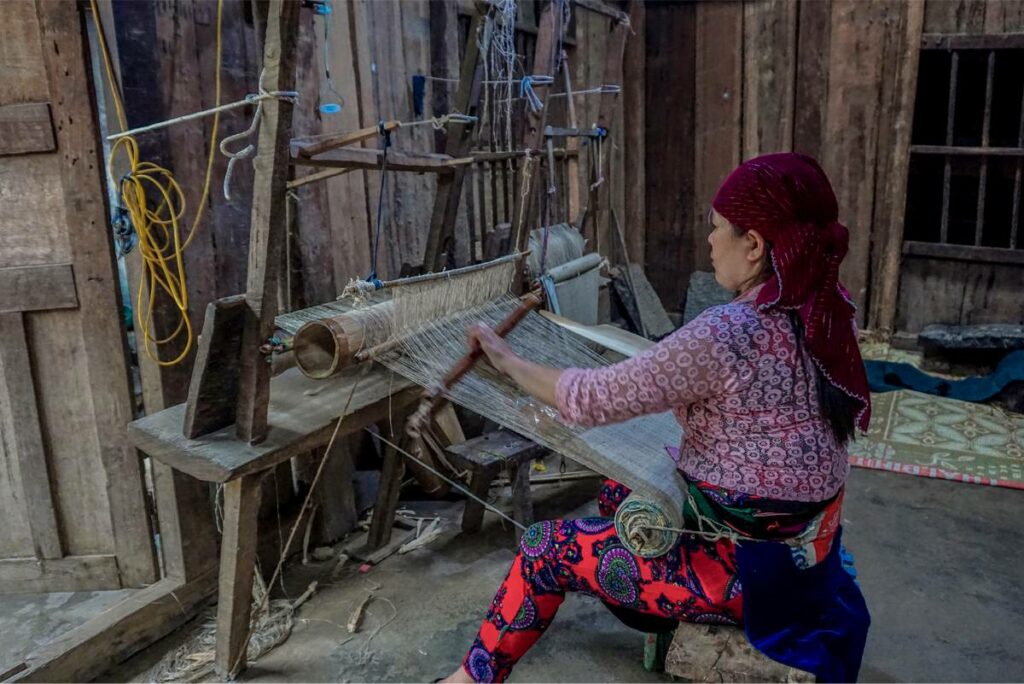
Lung Tam Village is a Hmong weaving village where locals produce handmade hemp fabric, dyed using traditional techniques. The weaving cooperative in the village provides jobs for over 120 Hmong women, preserving a centuries-old tradition that is now at risk of disappearing.
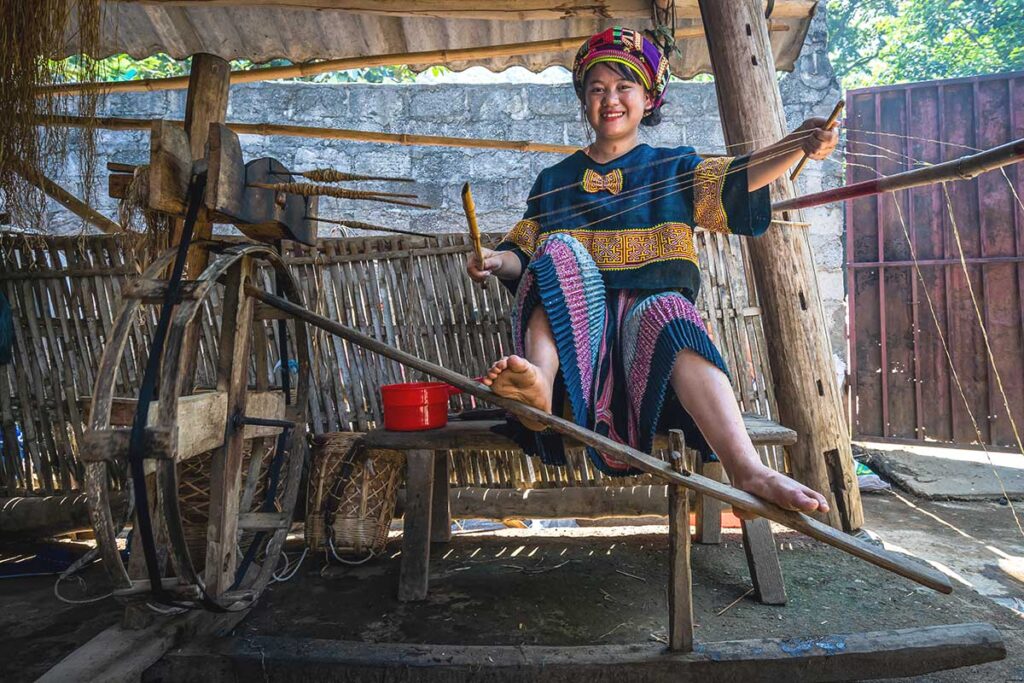
Visitors can observe the weaving process, learn about natural dyeing techniques, and purchase handcrafted textiles directly from the artisans. The setting is also beautiful, located along the Mien River, with lush hills surrounding the village.
4. Lung Khuy Cave
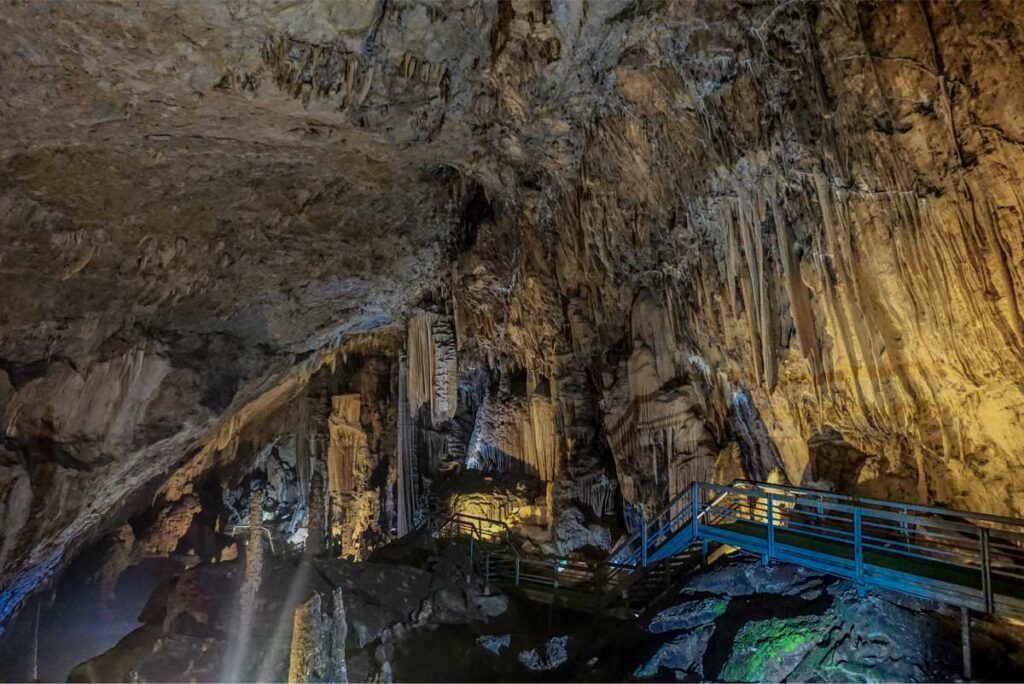
Lung Khuy Cave is Quan Ba’s largest cave, extending over 300 meters into the mountains. Inside, you’ll find impressive stalactites and stalagmites, as well as small underground pools. A wooden walkway and lighting system make it easy to explore.
What makes this cave especially worth visiting is the scenic drive to get there. The road leading to the cave offers stunning views of terraced fields, limestone cliffs, and local villages, making the journey just as rewarding as the cave itself.
Travel tip: There are two parking spots—one in the lower village (requiring a longer hike) and another closer to the entrance with free parking.
5. Nam Dam Village
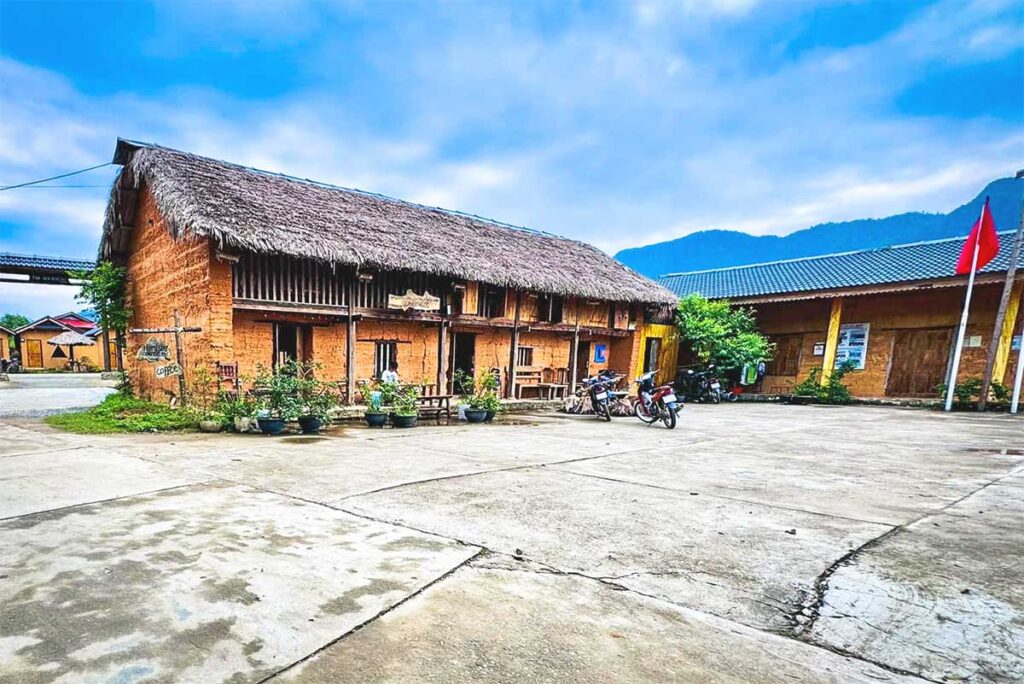
Nam Dam Village is a picturesque Dao ethnic village, known for its traditional wooden stilt houses, terraced rice fields, and peaceful atmosphere. Staying here offers a deeper cultural experience, with opportunities to join a local herbal bath, eat home-cooked meals, and interact with the Dao community.
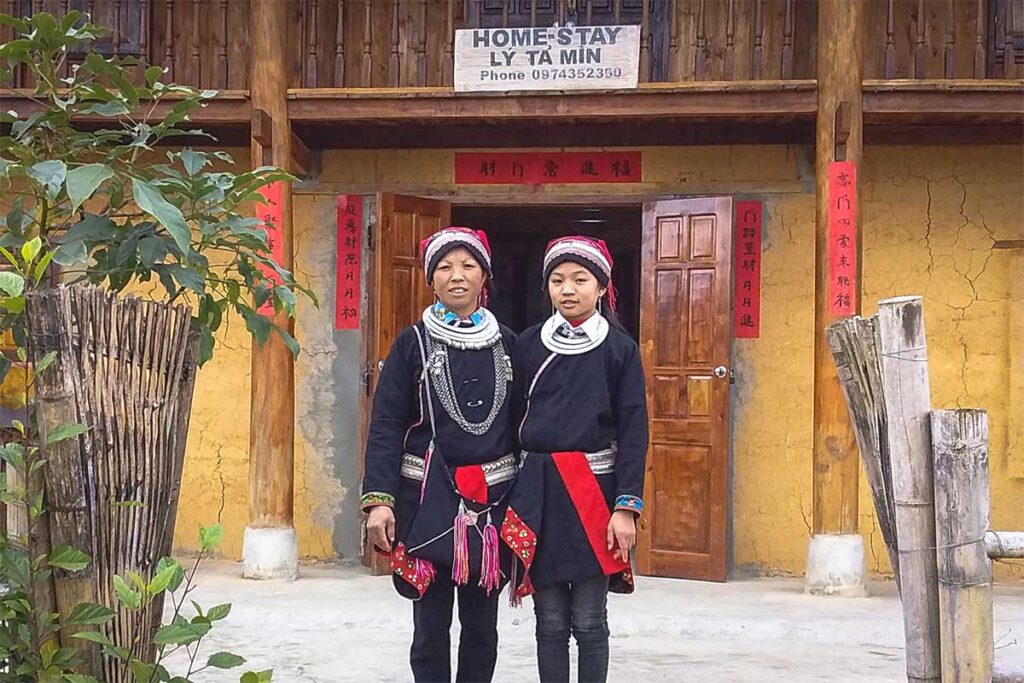
The village also serves as a starting point for various hikes, leading through rice fields and rolling hills. Even if you’re not staying overnight, Nam Dam is worth a short visit to experience the authentic ethnic culture.
6. Nai Nam Dam Waterfall
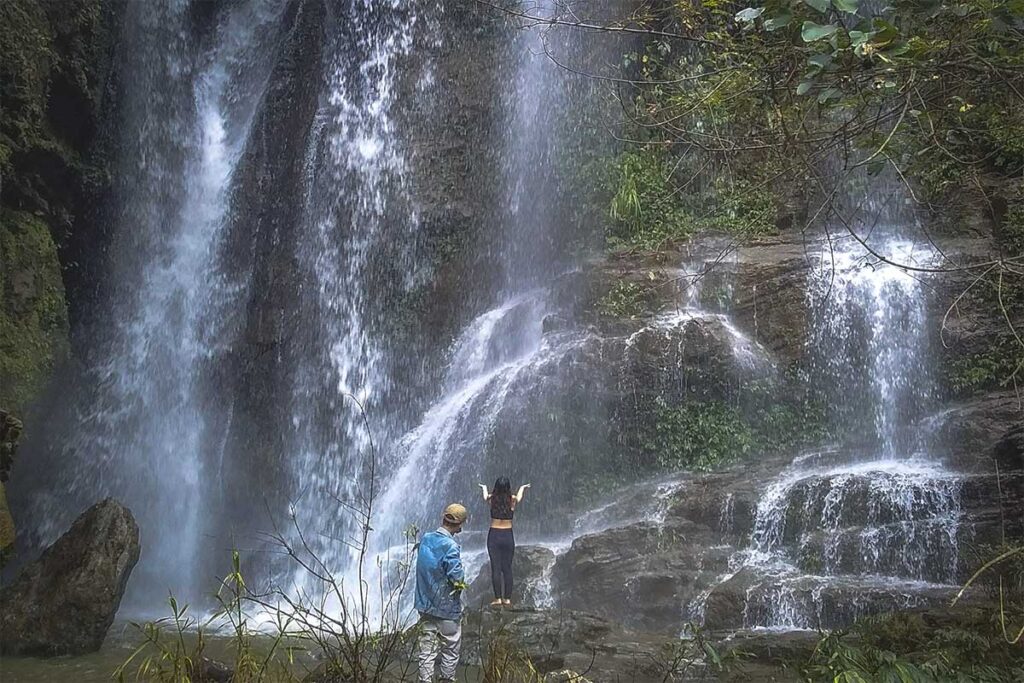
Located near Nam Dam Village, Nai Nam Dam Waterfall is a small but scenic waterfall that cascades down the mountainside into a peaceful valley. While not as large as other waterfalls in Ha Giang, it offers a serene spot to relax, particularly during the wet season (August – October) when water flow is at its strongest.
If you’re visiting Nam Dam Village, it’s easy to combine a short trek to the waterfall as part of your trip.
7. Quan Ba Central Market
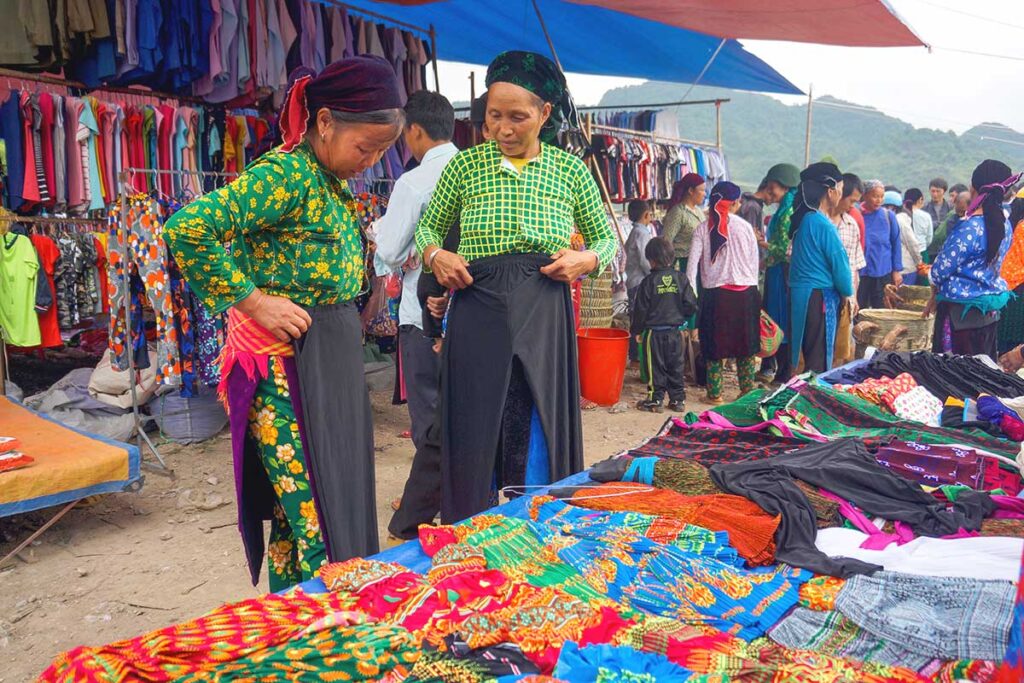
Quan Ba Central Market is a bustling ethnic market, held every Saturday morning in Tam Son town. It attracts Hmong, Dao, and Tay people from surrounding villages who come to buy and sell goods, socialize, and trade local produce. At the market, you’ll find handmade textiles, farming tools, fresh vegetables, and even livestock.
Travel tip: Arrive early (before 7 AM) for the most authentic experience, as the market starts winding down around 10 AM.
Other markets in Quan Ba include Cao Ta Tung Market, Tung Vai Market, Tung Tam Market, Bat Dai Son Market, Quyet Tien Market, Cho Lang Market, and Nghia Thuan Market. These markets are not daily, so check the schedule in advance if you want to visit one.
8. Thach Son Than Buckwheat Flower Fields
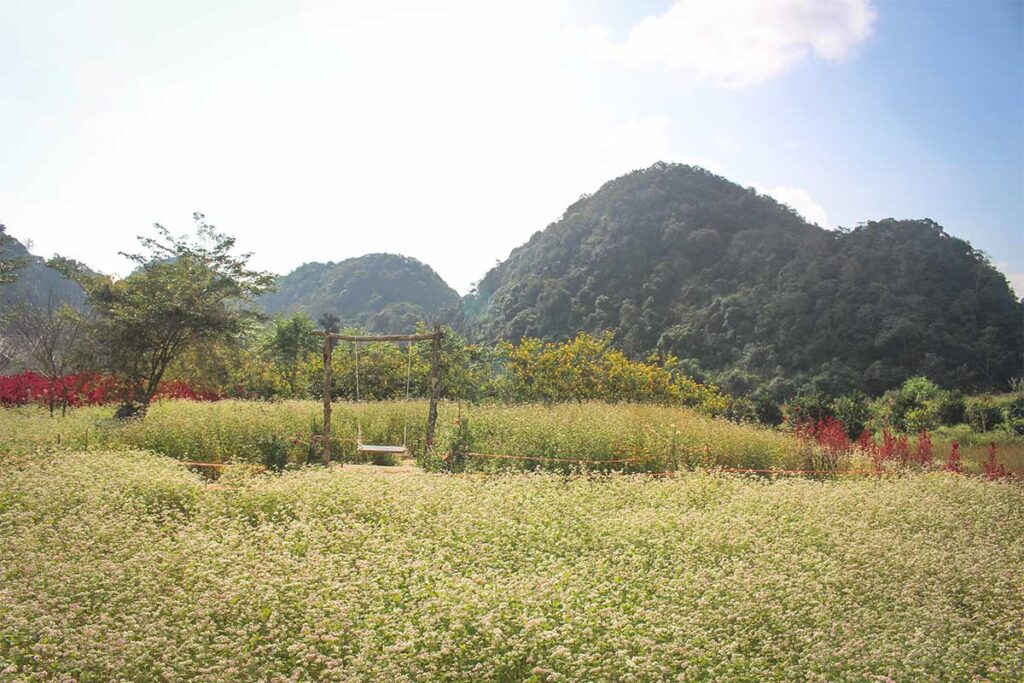
During buckwheat flower season (October – November), Thach Son Than is one of the best places to see these pink and white blossoms in Quan Ba. The fields stretch across rolling hills, creating picture-perfect scenery that attracts photographers and nature lovers alike. A small entrance fee is required during peak season.
9. The Lonely Tree
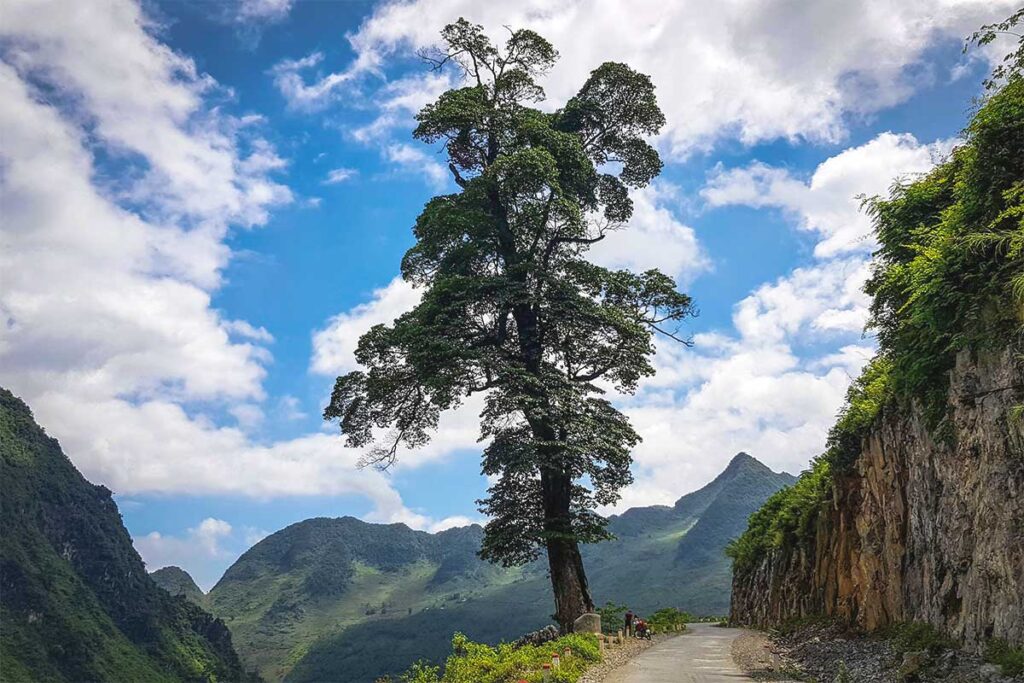
The Lonely Tree is a distinctive, solitary tree standing against a dramatic mountain backdrop between Tam Son and Yen Minh. While not a major attraction, it has become a well-known landmark along the Ha Giang Loop, often photographed by passing travelers.
This stop is best combined with other attractions in the area, as it’s more of a quick roadside photo opportunity than a destination in itself.
10. Lung Tam Valley
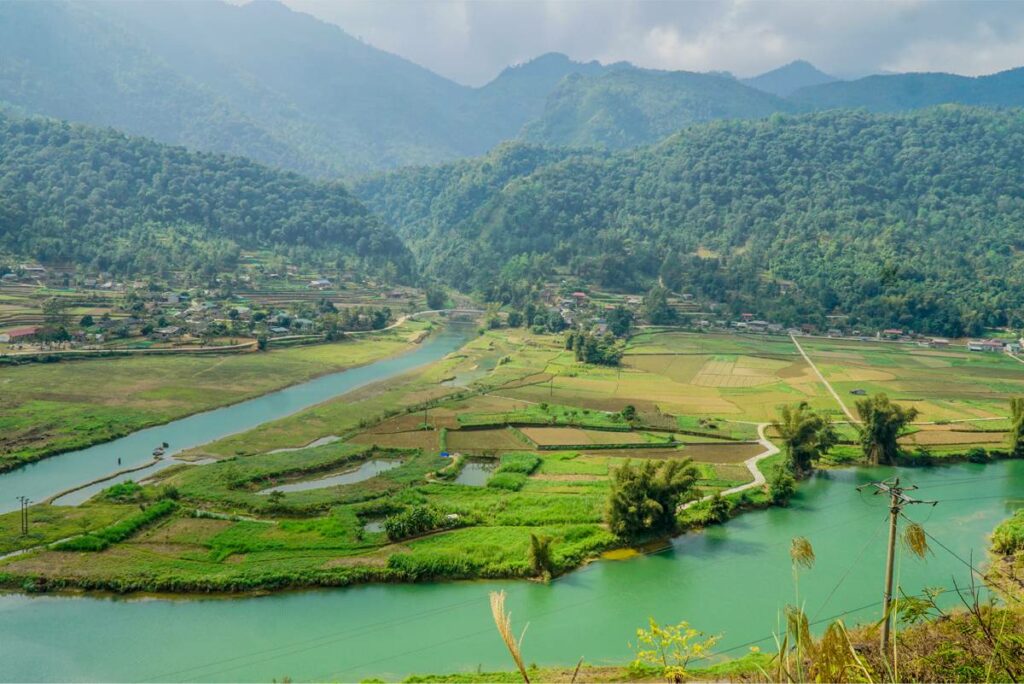
Lung Tam Valley is a lush, scenic valley featuring a winding river, rice fields, and ethnic villages. The valley is especially stunning from higher elevations, where you can look down over the landscape and appreciate its beauty.
A drive through the mountain roads surrounding the valley provides some of the best panoramic views in Quan Ba. Visitors can also explore local villages, including the earlier mentioned Lung Tam weaving village, for a deeper cultural experience.
Staying in Quan Ba
Quan Ba is just 60 km from Ha Giang City, making it one of the first stops along the Ha Giang Loop. Because of this, most travelers arrive by late morning or early afternoon and choose to continue further toward Yen Minh or Dong Van for an overnight stay. However, for those who prefer to travel at a slower pace, Quan Ba offers a peaceful retreat with a handful of homestays and budget accommodations.
The best way to experience Quan Ba is by staying in a local homestay, especially in the villages surrounding Tam Son town. These homestays, often run by Dao ethnic families, provide an authentic cultural experience, with home-cooked meals, traditional wooden stilt houses, and insights into local customs. While some accommodations can be booked online, others operate on a more informal basis, allowing travelers to find a place upon arrival.
Where to stay in Quan Ba
- Toong Homestay – A charming, family-run homestay offering an immersive cultural experience in a quiet rural setting outside Tam Son. Great for those looking to connect with local life.
- Diễn Homestay – A simple but peaceful stay surrounded by mountain views, providing a relaxing stop along the Ha Giang Loop.
- Hong Thu Homestay & Bungalow – Ideal for those looking for a bit more comfort and privacy, with bungalow-style rooms and stunning valley views.
- H’mong Village Resort – The most upscale option in Quan Ba, featuring modern comforts, private bungalows, and breathtaking panoramic scenery. A good choice for those willing to splurge on a more luxurious stay.
While Quan Ba may not be the most popular overnight stop, staying here allows travelers to soak in the beauty of the mountains, visit ethnic villages, and enjoy a slower, more immersive experience before continuing deeper into Ha Giang.
How to get to Quan Ba
Quan Ba is not a standalone destination but rather one of the first major stops on the Ha Giang Loop. Almost all travelers visit it as part of the loop, rather than making a separate trip just to see it. The Ha Giang Loop starts in Ha Giang City, the capital of Ha Giang province, which is the main gateway to this remote region.
Tip: Stop in Quan Ba as part of a Ha Giang tour
All our Ha Giang Loop tours include transfers from Hanoi, with options to start from Sapa or Cao Bang. It’s the easiest way to get there and explore stress-free. See all available tour options here.
To reach Ha Giang City, the most convenient option is to travel from Hanoi by bus, with two main choices:
- Overnight sleeper bus – A budget-friendly and time-saving option, departing in the evening and arriving early morning.
- Daytime limousine bus – A more comfortable option for those who prefer to travel during the day.
Once in Ha Giang City, Quan Ba is only 60 km away and is typically visited on the first day of the loop, regardless of whether you’re doing the journey in 3, 4, or 5 days.
Ways to travel the Ha Giang Loop
- Self-driving a motorbike – A thrilling way to explore but requires experience, as the roads are steep and winding. Without a Vietnamese driver’s license, you may not be fully insured in case of an accident.
- Easy Rider (motorbike with a guide) – A great alternative if you want the adventure but prefer not to drive yourself.
- Private car or jeep with a driver – The most comfortable and safest option, ideal for those who don’t ride motorbikes or prefer a more relaxed experience.
From Quan Ba, it is another 80 km to Dong Van, with plenty of scenic stops along the way.
Travel tips for visiting Quan Ba
How much time do you need in Quan Ba?
Most travelers pass through Quan Ba quickly, stopping only at Heaven Gate and the Twin Mountain viewpoint, which takes less than an hour. However, if you plan to visit places like Lung Khuy Cave, Nam Dam Village, and Lung Tam Weaving Village, expect to spend at least 3 to 4 hours. If you’re short on time, you’ll need to choose your stops carefully, or add an extra day to your Ha Giang Loop for deeper exploration.
Get your lunch in Quan Ba
If you leave Ha Giang City in the morning, you will likely arrive in Tam Son town around noon. This is the best place to stop for lunch before continuing the loop. The town has a handful of restaurants, and if you’re unsure where to eat, look for places with lots of motorbikes—these are often where Easy Rider guides bring their guests, making them a reliable choice. The next bigger town after Tam Son is Yen Minh, but that’s almost a 2-hour drive away without stops.
Restock essentials
Besides lunch, Tam Son is a good place to fuel up your motorbike, though if you filled up in Ha Giang City, you should still have enough for this leg of the journey. It’s also a great chance to buy water, snacks, or extra supplies for the road. If you’ve been using your phone for navigation or photos, charge it during your lunch stop to ensure it lasts for the rest of the day.
Respect local culture
Quan Ba is home to ethnic minority communities, such as the Dao and Hmong, who have rich traditions, colorful clothing, and a traditional way of life. While their culture is a fascinating highlight of Ha Giang, it’s important to respect their customs:
- Always ask for permission before taking photos of people or their homes.
- Do not enter someone’s house uninvited—even if the door is open.
- Avoid giving money to children, as this can encourage begging instead of schooling.
- Stay on marked paths and do not walk into rice fields just for a photo—these are essential to their livelihoods.
